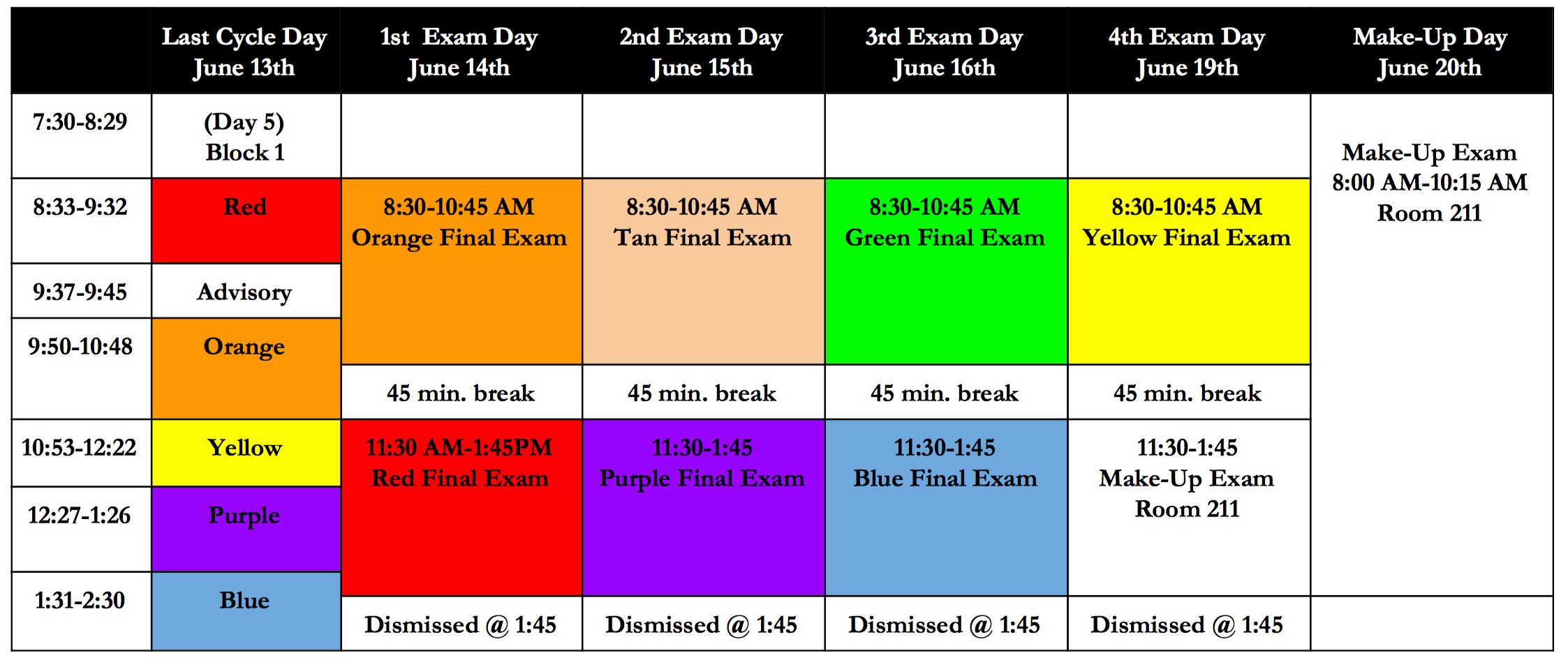Every year, students spend countless hours preparing for exams that occur in the span of three or four days. So how does the administration schedule these imperative days?
This past fall, the Faculty Senate, a group of faculty members that advocate for faculty needs, and the administration began developing the finals week schedule. They created one alternative schedule to consider, and they ended up choosing a hybrid of the alternative and the original schedule that the school has used in past years.
The faculty and administration decided to look into creating a new schedule to ensure that they were creating a schedule that was best for students. In doing so, they found that the primary problem with the original schedule was the order of the color blocks.
“The old schedule was basically selected because that’s the order of colors in Powerschool. Because we can do better, we wanted to analyze the priorities that people had with the final exam schedule. In analyzing those priorities, we examined that it probably would be better to have students have a customized schedule for them, and it also helps teachers on the grading end as well,” said Mr. Kyle Getz, Faculty Senate president.
Additionally, the original schedule did not include a full lunch, but rather the cafeteria opened for grab-and-go food.
“Some of our students who could use a bite to eat could really benefit from a full lunch. We also thought that a big lunch would have some added study time and some added social time that could release stress and allow students to decompress a little bit from their exams,” said Getz.
Based off of these shortcomings of the past finals week schedule, Faculty Senate created an alternative schedule.
The alternative schedule featured a different organization of color blocks, a full lunch block and review sessions built in throughout the exam schedule.
The color blocks were arranged so that the blocks in which the most students have finals happen first and the blocks in which students have the least classes are last to allow for teachers to have more time for grading and students to be released from school earlier.
“Every year we have the strong desire for kids to get out early who have camp or family trips planned or jobs, and we get lots of requests for kids to get out early,” Principal Jamie Chisum said.
The faculty intended the review sessions to extend the schedule, thereby ensuring that students would have a weekend during the finals week to study. Additionally, by distributing review sessions throughout finals week, they guaranteed that the last review session will occur closer to the date of the exam than it would in the original schedule.
“I think the review sessions are a good idea as long as they are optional, because students at the high school level should have the opportunity to decide which study plan is the best for them,” said Savitri Fouda ’17, Student Congress president.
Because of Fouda and her fellow Student Congress members’ comments, the administration considered making the review sessions optional, but that caused the problem of the school having too many half days, so there would not be enough school hours to complete the necessary 180 days of school.
As a mix of both of these schedules, the official finals week schedule has similar timing as the original schedule, but it has rearranged color blocks. The order of the color blocks is orange, red, tan, purple, green, blue, and yellow.
Most students appreciate this change because they will be able to leave school earlier.
“I love this idea. Last year I was lucky enough to not have a final the last day, and I was so relieved. I like how they’re trying to allow more students to finish earlier. I hope the school keeps listening to our requests,” Ellen Tierney ’17 said.
The administration took students’ perspectives into account by distributing a survey over email that allowed students to rate the schedules and share their reasoning and ideas. The results of the survey showed a wide range of information with many different views.
“The survey demonstrated to us that there needed to be more discussion and that an instantaneous decision based on the survey would not have been in the best interest of the school,” Getz said.
Overall, the administration and faculty senate felt that the alternative schedule needed more time to develop. Although the administration did not implement a significant change this year, one may be coming in the future.
“I want to see more. I wasn’t ready to go to the new schedule this year, and some others in the administrative team felt the same way,” Chisum said. “I didn’t think the faculty had enough time to weigh in on it; the students didn’t have enough time to weigh in on it. I think it would’ve felt like it was coming out of left field.”

